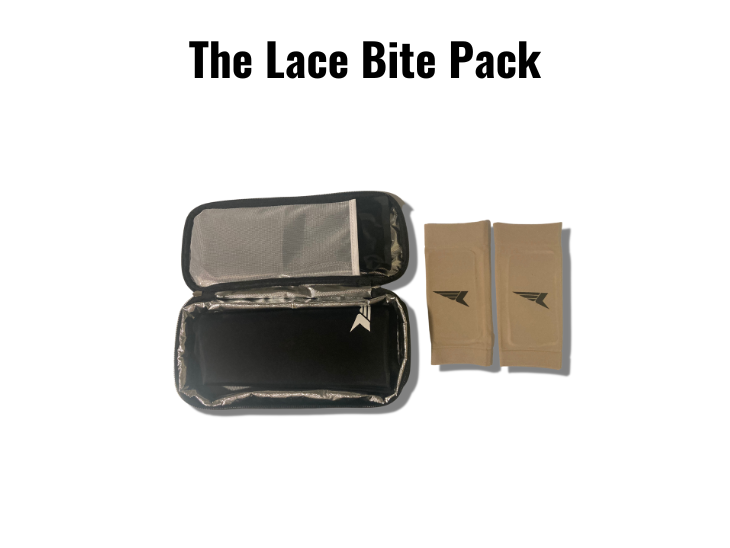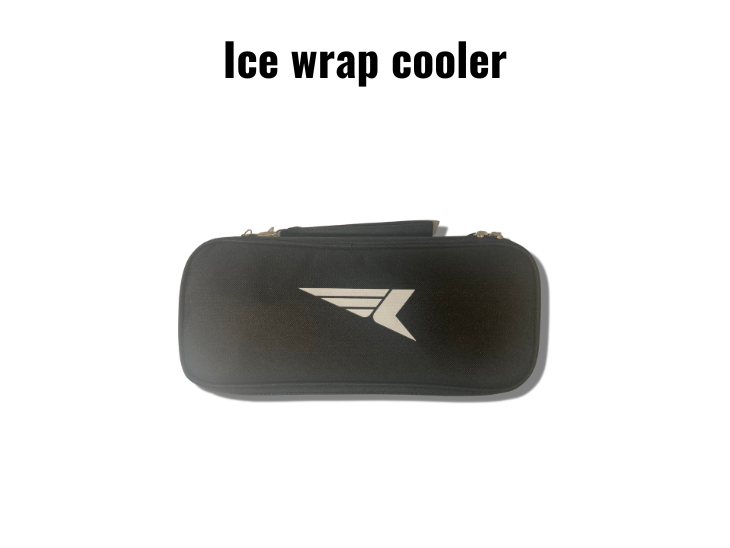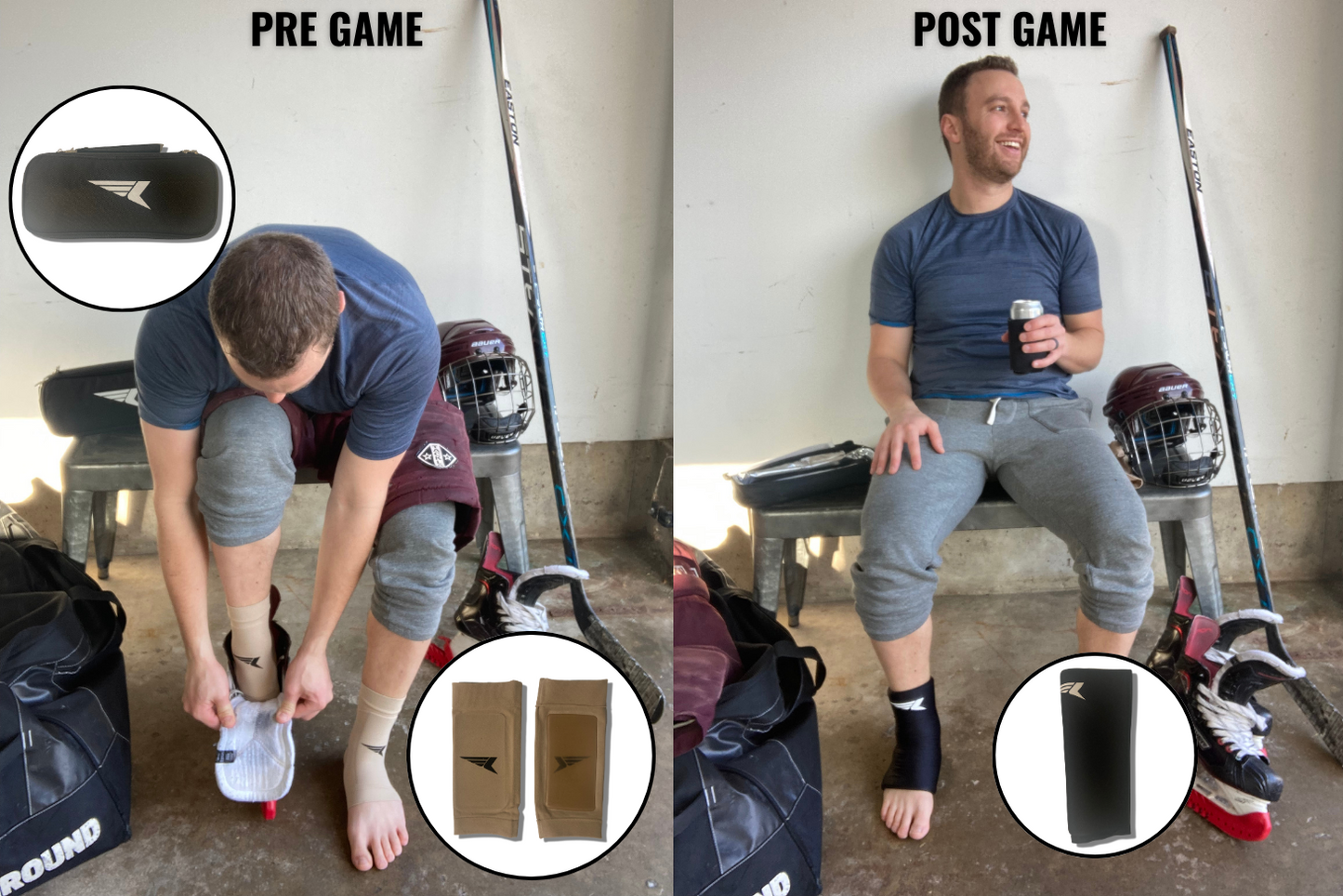Lace bite (Anterior Tibialis Tendonitis) is pain felt on the top of the foot or front of the ankle while ice skating. Striding hurts when the foot or ankle make contact with the tongue of the skate. The pain can increase over time with continued skating.
Lace bite often presents with a red, swollen bump over the painful area, especially for more severe cases. It can even become painful to touch off the ice.

What causes lace bite?
Lace bite can be caused from:
- Poorly fitted skates
- Using new ice skates and they aren’t broken in
- Skating after a long period of not skating
- Skating at full speed without warming up
- Spending more time than usual in ice skates
- Tying skates too tightly
These issues can cause the tendon that runs through your foot and ankle to become irritated when playing hockey or figure skating. When the tibialis anterior tendon (pictured below) becomes inflamed, sore, or tender, skating will be painful.

Lace bite develops from rubbing and pressure between the tongue of an ice skate and the ankle or foot of the skater. This friction irritates that tendon that runs along your foot and ankle.
Today’s ice skates are usually made with carbon fiber while years ago they were made with leather. Leather tends to be more forgiving and easier to bend that carbon fiber, which is stiffer. “They don’t make ‘em like they used to…”
As a result, lace bite has become relatively common among hockey players and figure skaters, which has prompted research from the medical community. A team of Columbia University Medical Center physicians studied how to address lace bite for hockey players, and a separate team of doctors studied lace bite in figure skaters.
Findings across these studies are relatively consistent, and Lace Bite Nerd was created by hockey players for hockey players to teach every effective technique on how to fix lace bite.
We also designed and sell our lace bite pack to help hockey players and figure skaters skate pain free. I use them every time I skate.





